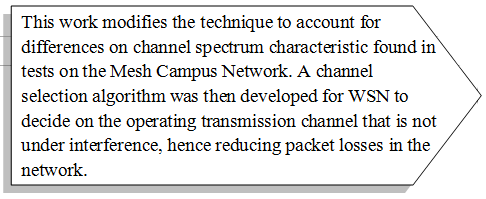|
With the extensive development of heterogeneous wireless communication technology, combined with the advances of data acquisition, emerges a new trend of networked acquisition systems. Among this range of wireless technology, Wireless Sensor Networks (WSNs) has attracted much interest and visibility due to its huge application space. One challenge using the WSN is the short range of the sensor nodes that increases the complexity of transporting the data to a central server. The integration with Wireless Mesh Networks (WMNs) expands the communication range and allows mobility of the device. Thus, WSN can be used for forming the underlying sensing and WMN supports the network infrastructure in pervasive computing environments. However, interference is a problem as these networks share the same 2.4GHz industrial, scientific and medical (ISM) unlicensed band. The impact of the interference on the IEEE 802.11g (WMN) using OFDM modulation and on IEEE 802.15.4 (WSN) using DSSS is investigated in this research. Results from a series of experiments on the AIT wireless mesh campus network under realistic load conditions are presented. Packet retransmission and packets drop rate were measured and based on this knowledge, a channel interference classification (CIC) method is presented to identify the interfering operating channel. The method introduced is based on a technique proposed by Chowdhury et. al. for channel selection based on reference power values. This work modifies the technique to account for differences on channel spectrum characteristic found in tests on the Mesh Campus Network. A channel selection algorithm was then developed for WSN to decide on the operating transmission channel that is not under interference, hence reducing packet losses in the network. This paper will be of interest to network operators and organisations where critical information retrieval over wide area networks is required.
|




